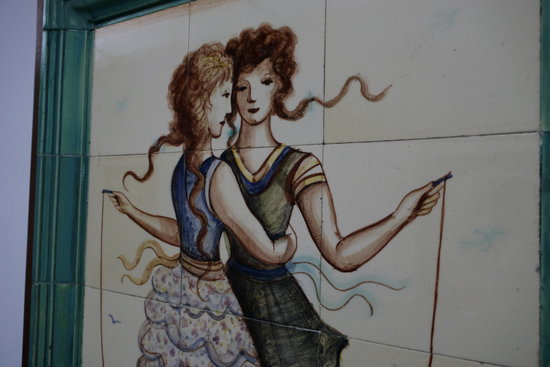Lost ceramics rediscovered
The ‘noucentiste’ works by Josep Aragay were thought to have been lost decades prior

Fantastical, colourful ceramics are some of the staples of turn of the century Catalan art. And pieces from one of the most renowned artists of the ‘Noucentisme’ movement, Josep Aragay, previously thought to be lost, have been uncovered.
Seven ceramic works of art have been recovered in a Barcelona public building. The artist responsible was Josep Aragay, born in Barcelona in 1889, died in 1973. The artwork dates back to 1931, when Aragay was commissioned to decorate the children’s wing of the Antituberculosis Institute.
Years later, the works were moved to a kindergarten at the Pere Calafell building in the Sant Martí district in Barcelona. This is when all tracks of them were lost. Until, that is, the building was acquired by the Barcelona City Council, around two years ago.
A “returned” value
The local councilor for the district where the artwork was found, Josep Maria Montaner, appreciated the fact that the pieces remained in good condition after “they had been lost track of,” and that their value could be “returned” to them.
“These are 7 canonical pieces of the Noucentisme movement, by an important artist who faced disciplinary actions from the Primo de Rivera dictatorship and the Franco regime,” highlighted Montaner. He added that the pieces of the artist “were scattered” because he was a “multi-faceted” character.
Noucentisme
The ceramics, while decorated with childlike motifs, squarely falls within the ‘Noucentisme’ category that Aragay is so famous for. Noucentisme (translated as ‘nine-hundredism’ in English) was a cultural movement in Catalonia following and as a response to Modernism, focusing on order and modern idealism, seen in architecture, literature, and art in the first three decades of the 20th century.
One can see some of Aragay’s work in central Barcelona on a fountain at the end of the Portal de l’Angel street, featuring multicolored angel-like beings. While having been born in Barcelona, Aragay moved to Breda, a northern village near Girona, where he opened a ceramics workshop and spent the rest of his life.
The ceramics are set to remain in the Pere Calafell building where they were found, but an exhibition is planned with the Josep Aragay museum in Breda, paired with the original sketches of the artwork.